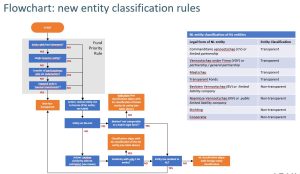The OECD/G20 Inclusive Framework on Base Erosion and Profit Shifting (BEPS) has recently published the Consolidated Report on Amount B, compiling all relevant materials on the subject released throughout 2024. This report serves as a reference document, providing streamlined guidance for the application of the arm’s length principle to in-country baseline marketing and distribution activities. It is particularly aimed at addressing the needs of low-capacity jurisdictions, reducing compliance burdens, and enhancing tax certainty.
Reason for Publication
The Inclusive Framework has been working on Amount B as part of the broader Two-Pillar Solution to address tax challenges arising from the digitalization of the economy. The initial guidance was published in February 2024 and incorporated into Chapter IV of the OECD Transfer Pricing Guidelines. However, at the time of publication, certain administrative aspects remained unresolved, including definitions of “qualifying jurisdictions” and the list of jurisdictions within scope of the political commitment on Amount B. Subsequent clarifications and agreements in June and September 2024 led to the need for a consolidated report that brings together all relevant materials in one place for ease of reference.
Changes from Previous Publications
Unlike earlier reports, the Consolidated Report on Amount B does not introduce new guidance or modifications to previously published content. Instead, it compiles all statements and agreements made in 2024, ensuring that stakeholders have a single, comprehensive source of information. Key developments throughout the year include:
- Finalization of jurisdiction definitions: The Inclusive Framework issued clarifications on the definitions of “qualifying jurisdictions” and “covered jurisdictions” in June 2024.
- Model Competent Authority Agreement: In September 2024, the Inclusive Framework released a standardized agreement template to facilitate the implementation of Amount B across jurisdictions.
- Focus on tax certainty: The guidance now emphasizes the importance of minimizing disputes by providing clear pricing frameworks and documentation requirements.
Key Considerations
The Consolidated Report on Amount B reinforces the OECD’s commitment to simplifying transfer pricing compliance, especially for low-capacity jurisdictions. Some key points to note:
- Scope of Application: The guidance applies to baseline marketing and distribution activities, with specific exclusions for entities assuming economically significant risks or owning valuable intangibles.
- Simplified Pricing Framework: A three-step process determines a return on sales for in-scope distributors, enhancing predictability in transfer pricing assessments.
- Implementation Timeline: The guidance is elective, with jurisdictions able to apply the simplified approach to qualifying transactions from fiscal years commencing on or after January 1, 2025.
The Three-Step Pricing Approach
The simplified pricing framework introduced in the report follows a structured three-step approach:
- Industry Grouping Classification – The tested party is classified into one of three industry groupings based on the type of goods it distributes. This ensures an industry-specific approach to pricing.
- Factor Intensity Classification – The tested party is assessed based on its net operating asset intensity and operating expense intensity. These factors help determine the appropriate profit margin range.
- Determination of Return on Sales – A pricing matrix is applied, combining the industry grouping and factor intensity classification to establish an arm’s length return on sales within an acceptable range.
Potential Challenges and Implementation Concerns
One notable concern regarding Amount B is that its adoption is not mandatory for all jurisdictions. As the regime is elective, some countries may choose to implement it while others may not, leading to potential mismatches in transfer pricing outcomes. This fragmentation could result in disputes between tax authorities, particularly where one jurisdiction applies the simplified framework while another adheres to traditional transfer pricing rules. Such inconsistencies may reduce the intended benefits of simplification and tax certainty, potentially leading to double taxation or compliance complexities for multinational enterprises.
Final Thoughts
The publication of the Consolidated Report on Amount B is a significant step in the OECD’s broader BEPS project, ensuring that transfer pricing rules remain clear and effective. Taxpayers and advisors should review the consolidated guidance to understand its implications fully and prepare for potential implementation in relevant jurisdictions. As always, continued engagement with tax authorities and adherence to documentation best practices will be key to leveraging the benefits of this framework effectively. Depending on the specific facts and circumstances (business and location), there may be instances where the application of Amount B proves advantageous for businesses, particularly when the principles of Amount B align with their existing pricing practices and operational structure. It is essential to evaluate each case individually to determine how the implementation of Amount B can drive efficiencies, simplify compliance processes, and ensure consistent adherence to evolving international transfer pricing regulations.

